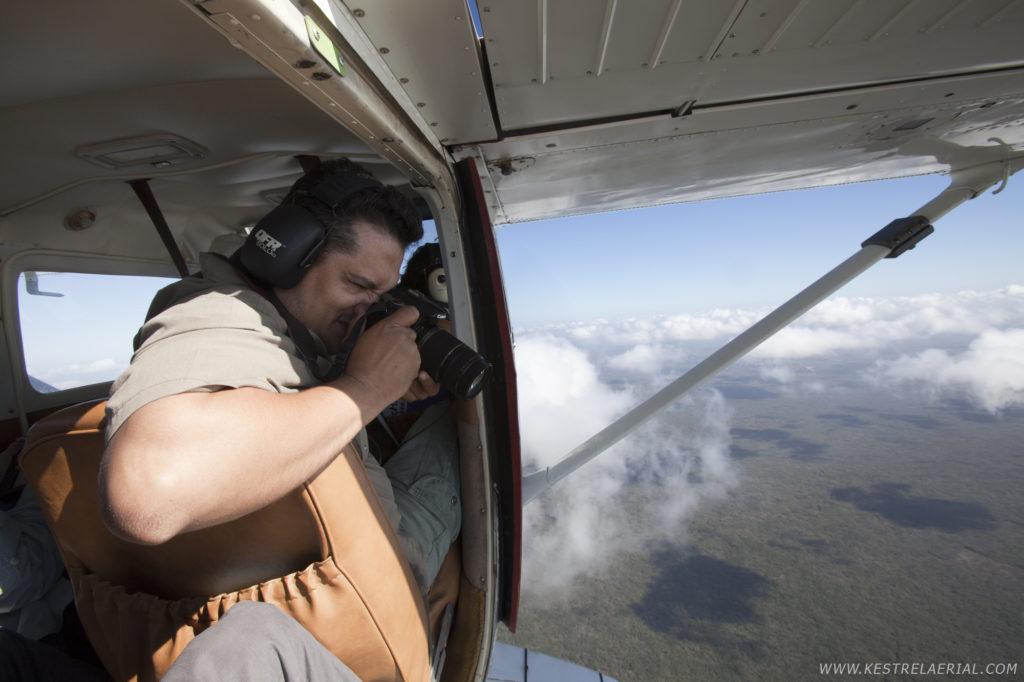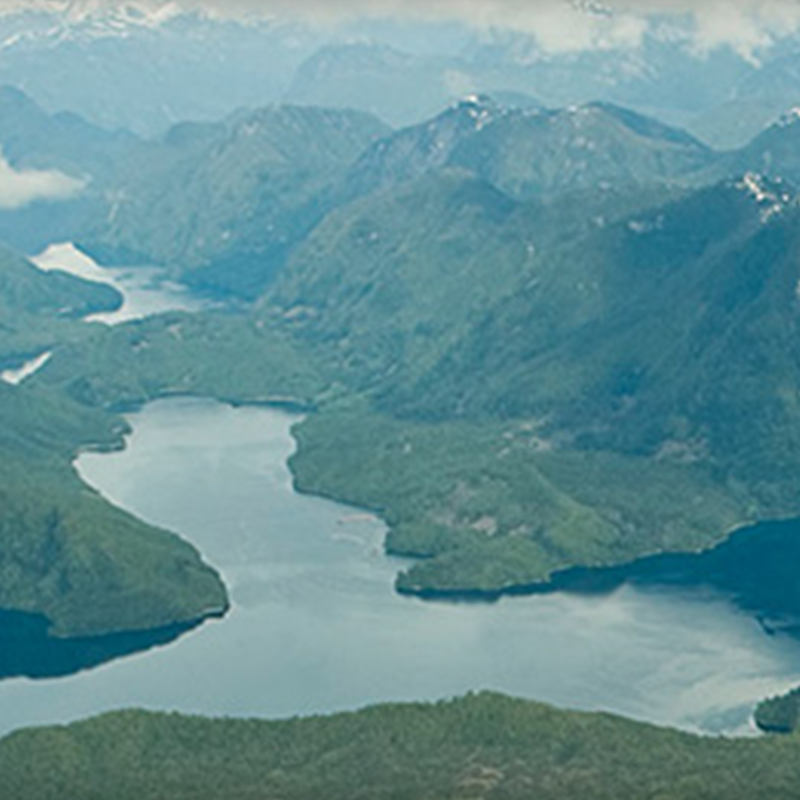Search results for: LightHawk
LightHawk: The Power of Aerial Images to Benefit Conservation
Seeing is believing. It’s an idea at the cornerstone of the work we do as a non-partisan conservation non-profit group. We believe that people will make the right decision when given a clear picture of an issue and what’s at stake. We have seen the magic of the aerial perspective at work for some of…
Read MoreLightHawk’s mission is flying to save the earth
LightHawk, our current Natural World beneficiary, utilizes the unique perspective of flight to advance the conservation efforts of their many partner organizations. LightHawk "mobilizes volunteer pilots, photographers, environmental experts, and storytellers to make images, collect data, inform the public and share their experiences about some of our environment's most critical issues, landscapes, and wildlife." The goal…
Read MoreLighthawk
Lighthawk takes research to the skies. By connecting scientists and planners with volunteer small plane pilots, they enable systematic monitoring, research, and planning of natural areas and animal populations. Lighthawks’s work and research collaborations provide photographs, video, and images to aid scientific research. Written descriptions of Lighthawk’s work and collaborations aren’t sufficient to describe how…
Read MoreLighthawk
Lighthawk takes research to the skies. By connecting scientists and planners with volunteer small plane pilots, they enable systematic monitoring, research, and planning of natural areas and animal populations. Lighthawks’s work and research collaborations provide photographs, video, and images to aid scientific research. Written descriptions of Lighthawk’s work and collaborations aren’t sufficient to describe how…
Read MoreLighthawk
LightHawk utilizes the unique perspective of flight to advance the conservation efforts of their many partner organizations. LightHawk “mobilizes volunteer pilots, photographers, environmental experts, and storytellers to make images, collect data, inform the public and share their experiences about some of our environment’s most critical issues, landscapes, and wildlife.” The goal of these flight missions…
Read MoreFBB members support LightHawk’s aerial conservation efforts
 LightHawk was our Natural World beneficiary for the first quarter of 2013. Director of Giving Laura Armstrong shared this report about how LightHawk will use the grant they received from FBB. FBB members donated $7,760 to LightHawk last quarter.
LightHawk was our Natural World beneficiary for the first quarter of 2013. Director of Giving Laura Armstrong shared this report about how LightHawk will use the grant they received from FBB. FBB members donated $7,760 to LightHawk last quarter.
LightHawk is grateful for Foundation Beyond Belief’s generous support in the first quarter of 2013. Member donations are supporting flights that achieve environmental protection through scientific research, monitoring, aerial photography, and educational tours. The following are a handful of the more than sixty projects that LightHawk’s staff and volunteer pilots are working on this spring to protect land, water, and wildlife across North and Central America:
| LightHawk flies with biologists from Panthera to study the jaguar migration corridor that stretches the length of Central America from Guatemala to Panama. As shown in this photograph from Guatemala, the aerial view reveals deforestation that is nearly impossible to discover from the ground. (Image: Roberto Solom/Panthera/LightHawk) |  |
| At Wisconsin’s Necedah National Wildlife Refuge, LightHawk’s volunteer pilots are flying with scientists from International Crane Foundation to monitor the whooping crane nesting season. The marshy habitat is unreachable from the ground without disturbing the birds, so flights are the only way to track nesting success. (Image: Eva Szyszkoski/ICF/LightHawk) |  |
| In June 2012, lightning ignited a wildfire in the foothills west of Fort Collins, Colorado, that burned 87,000 acres of the Poudre River watershed and threatened Northern Colorado’s water supply. Runoff from the steep hillsides during summer downpours caused the river to run black with char. LightHawk is part of the High Park Fire Coalition, more than a dozen organizations and agencies working to restore the watershed. The aerial view shows the patchiness of the fire and helps identify the damaged areas most likely to impact the river. (Image: Michael Menefee/Colorado Natural Heritage Program/LightHawk) |  |
| The Colorado River tops this year’s list of endangered rivers according to American Rivers. LightHawk works with local, regional, and national partner groups to protect the Colorado River, from Wyoming to Mexico. (Image of Colorado River Delta at the Sea of Cortez by Tom McMurray/LightHawk) |  |
Across North and Central America, from Alaska to Panama, LightHawk is flying to make a difference for conservation by providing the incomparable perspective of the aerial view. Thank you for making these flights for conservation possible!
Laura Armstrong
Director of Giving, LightHawk
LightHawk volunteer pilots help rescue endangered turtles
 LightHawk, our current Natural World beneficiary, shared this story about how LightHawk volunteer pilots helped rescue stranded endangered turtles in Cape Cod Bay:
LightHawk, our current Natural World beneficiary, shared this story about how LightHawk volunteer pilots helped rescue stranded endangered turtles in Cape Cod Bay:
Every winter, hundreds of young sea turtles strand themselves along the beaches of Cape Cod Bay. This large-scale stranding of cold-stunned sea turtles happens nowhere else in the world, perhaps because of the unique geography of the Bay.
According to the New England Aquarium, Kemp’s ridley, green and loggerhead sea turtles migrate up the East Coast in early summer to feed on crabs in the rich, coastal waters. In September, the instinct to swim south is most likely clear, but often these young turtles aren’t able to navigate their way out of Cape Cod Bay. Swimming south, east or west leads to land barriers. Swimming in the counter-intuitive direction of north for 20 miles is the only safe passage past the tip of Cape Cod.
Sea turtles that fail to find their way around the Cape slowly become hypothermic during the autumn months as water temperatures decline. By November, the corralled turtles not only are near death with low body temperatures, but can be dehydrated, malnourished and host to a variety of infections.
Read the full story at the LightHawk website.
Read MoreLightHawk uses air support to rescue, track threatened species
B y Stephanie Jackson Ali
y Stephanie Jackson Ali
Already this year, LightHawk, our current Natural World beneficiary, has participated in two activities to protect and preserve endangered wildlife in the vulnerable habitats of Central America.
In November 2012, the first-ever harpy eagle nest discovered in Honduras was found during a ground expedition by biologists from Panthera and Asociación Patuca. This is the first nest seen north of Panama. Since then, much work has been done in the area by LightHawk to protect the nest, including working on a conservation strategy. Ground expeditions to the area had been carried out for information gathering, but it was believed more could be gained from the air.
 On January 29, LightHawk donated a conservation survey flight to “reveal where threats to the nest’s viability may exist,” Armando Ubeda, LightHawk’s Mesoamerica program manager. The flight would also provide a look at the surrounding topography, inside “the largest national park in Honduras, to inform plans to safeguard the breeding pair.”
On January 29, LightHawk donated a conservation survey flight to “reveal where threats to the nest’s viability may exist,” Armando Ubeda, LightHawk’s Mesoamerica program manager. The flight would also provide a look at the surrounding topography, inside “the largest national park in Honduras, to inform plans to safeguard the breeding pair.”
Harpy eagles are among the “heaviest and most powerful of birds” in the Americas. But they are also quickly losing habitat and home to logging and poaching, as well as destruction of habitat. Efforts such as those by LightHawk will help to encourage the regrowth of the species in areas where the birds have not been seen in some time.
A few days later, in early February, LightHawk arranged a flight for an injured Yucatan black howler monkey, named Mia, to be taken to Wildtracks Primate Rehabilitation Center in Sarteneja, Belize. Wildtracks, founded by Zoe and Paul Walker, often works with LightHawk in the region.
 Days earlier, Mia had been hit by a car, and although she had no broken bones, she showed signs of a concussion. The idea is for Mia to spend time at Wildtracks for rest and recuperation and return to the wild in a few weeks.
Days earlier, Mia had been hit by a car, and although she had no broken bones, she showed signs of a concussion. The idea is for Mia to spend time at Wildtracks for rest and recuperation and return to the wild in a few weeks.
It is also believed Mia is nursing, so there is pressure to get her healthy and back with her original troop quickly to reunite her with her juvenile. Yucatan howler monkeys are also very social, so it is important for her to return to the wild quickly so as not to become depressed.
Black howler monkeys have fallen victim to habitat loss, hunting, and the global pet trade. Estimates from conservationists put the entire adult population at just 2,500. The Yucatan black howler monkey has been endangered since 2003.
Read MoreLightHawk mission helps restore watershed after Colorado wildfires
 By AJ Chalom
By AJ Chalom
In mid-July, members of Foundation Beyond Belief voted to approve a Crisis Response for areas affected by the Colorado Wildfires. We chose to donate to the volunteer fire departments to help them replenish their supplies after their firefighting efforts were finished. One of the beneficiaries was the Rist Canyon Volunteer Fire Department (RCVFD).
Walker Bristol described the High Park Fire: “[Fire Chief] Bob Gann … posted a reflection to the RCVFD website: ’The High Park Fire certainly eclipses anything we have seen.’
“The plight of the Colorado volunteer firefighters isn’t one of heroes coming on horseback from beyond the horizon to help the endangered; it’s one of heroes emerging from the catastrophe itself. Fellow citizens, who go to the same drug store as the peers they’re protecting, … shouldered the burden of a threatened community themselves.”
Not only houses, buildings, and a community were burned—a forest and a watershed were also affected by the fire. Our current Natural World beneficiary LightHawk describes one mission in their newsletter, Waypoints. “[T]he High Park fire burned … more than 87,000 acres. The fire burned a large portion of the Poudre River Watershed, which serves as a primary source of water for the cities of Fort Collins and Greeley, as well as several rural water districts. With extensive areas of burned timber and unstable soils, heavy late summer rains caused severe mudslides that closed roads and made the Poudre River run black.”
 The community was not left to rebuild by itself: LightHawk joined the effort.
The community was not left to rebuild by itself: LightHawk joined the effort.
LightHawk reports, “[S]cientists, nonprofit organizations, and local government leaders got together and formed the High Park Restoration Coalition to ensure coordinated, well-planned restoration efforts. LightHawk was there in the early stages of the effort, flying leaders of the coalition over the burned area to inform their planning efforts …
“[On October 8,] seven LightHawk pilots … provided the aerial perspective to twelve additional community leaders. Passengers on these flights observed the effects and extent of the fire, and were also able to see volunteers on the ground actively working to stabilize soils with barriers and reseeding efforts. Following the flights, they met to share ideas and emphasize the importance of coordinating their efforts and working together to efficiently and effectively restore the watershed that they all depend upon.”
LightHawk’s Mission Map describes three missions, on August 30, October 7, and October 15, that related to this project. Search the map for dates and select “Wildlands” to find out more.
Read MoreTop Ten Signs of Spring—FBB Style!
March 20th was officially the first day of spring, and at Foundation Beyond Belief we are welcoming it with open arms! Here are our top ten signs of spring, as represented by some of our Humanist Grants beneficiaries over the years. #10: The Sun is Shining Say goodbye to those gray winter days and hello,…
Read More





